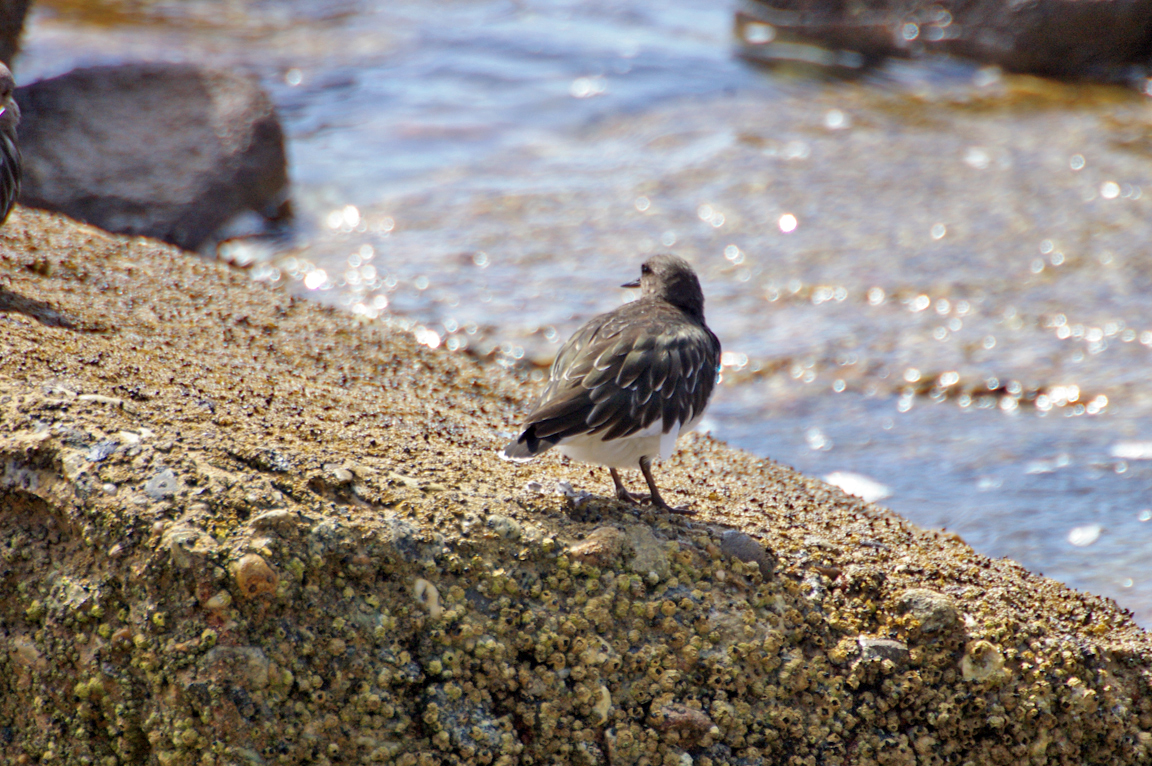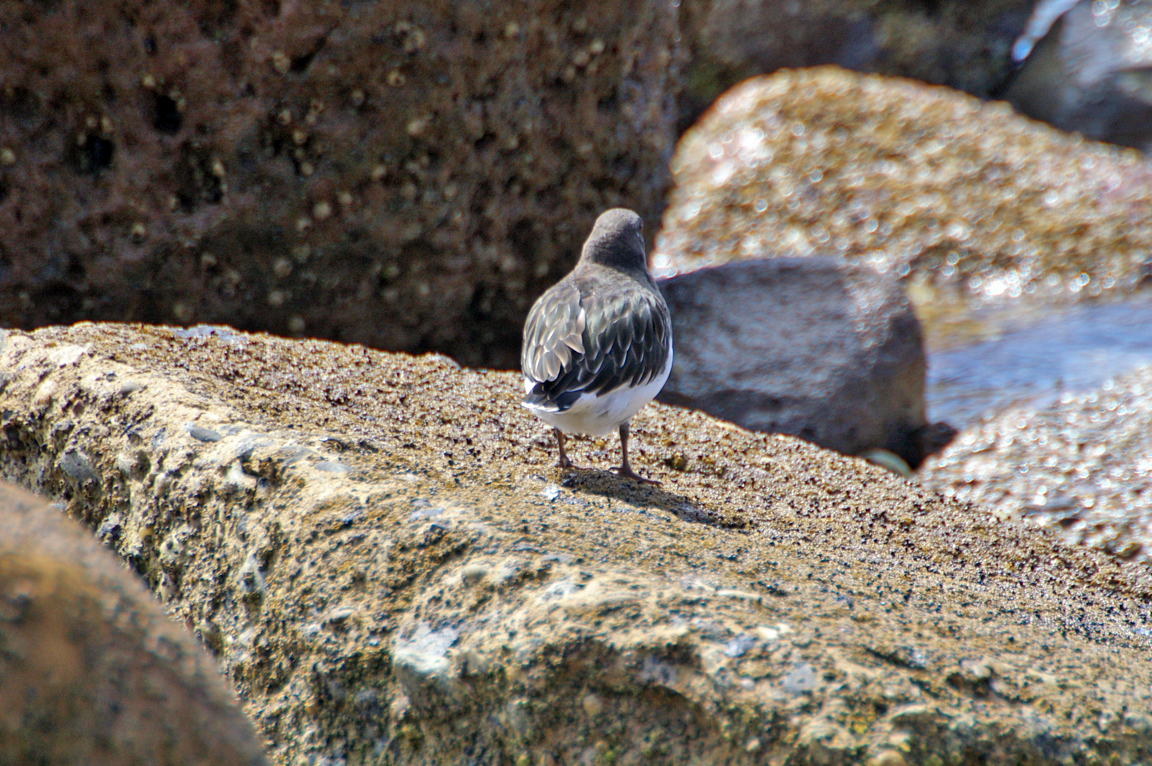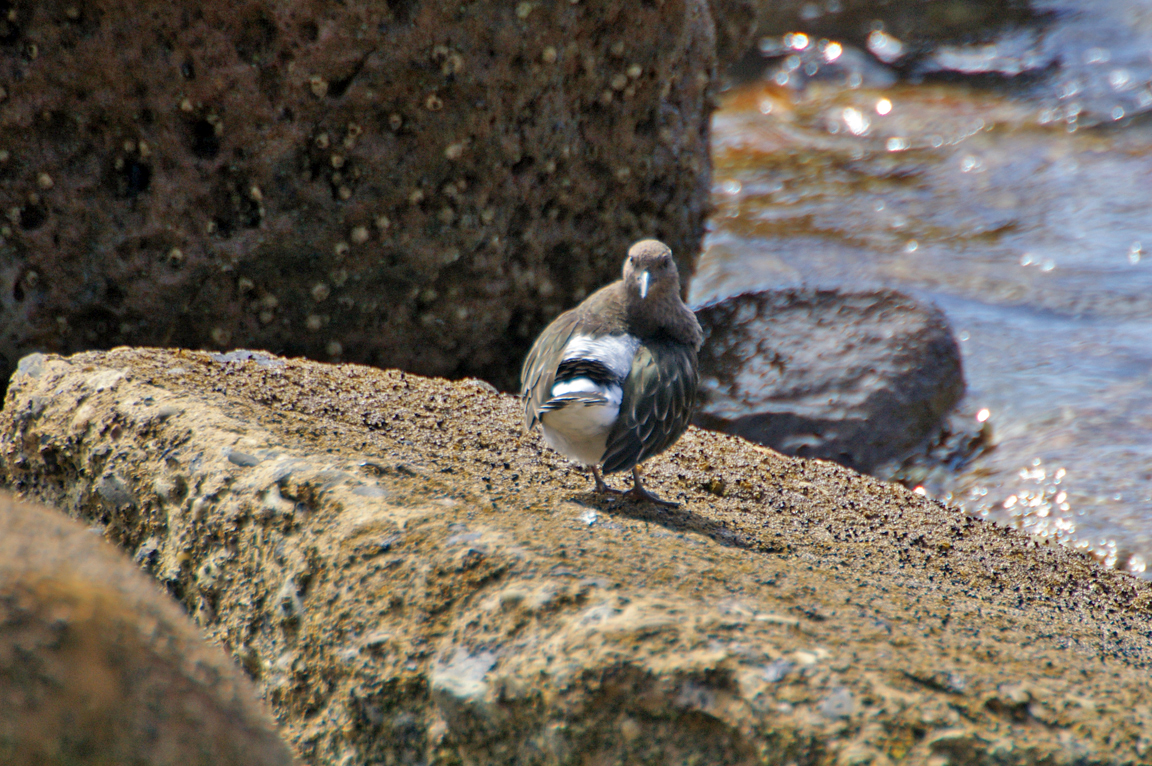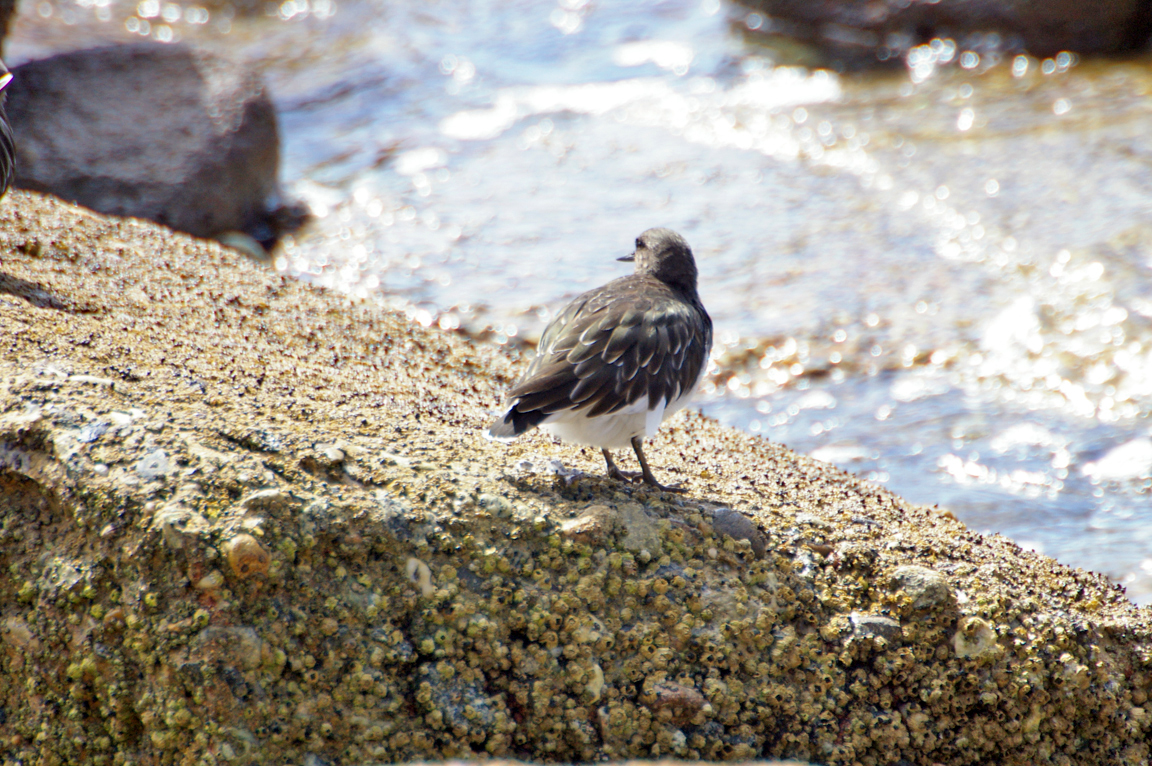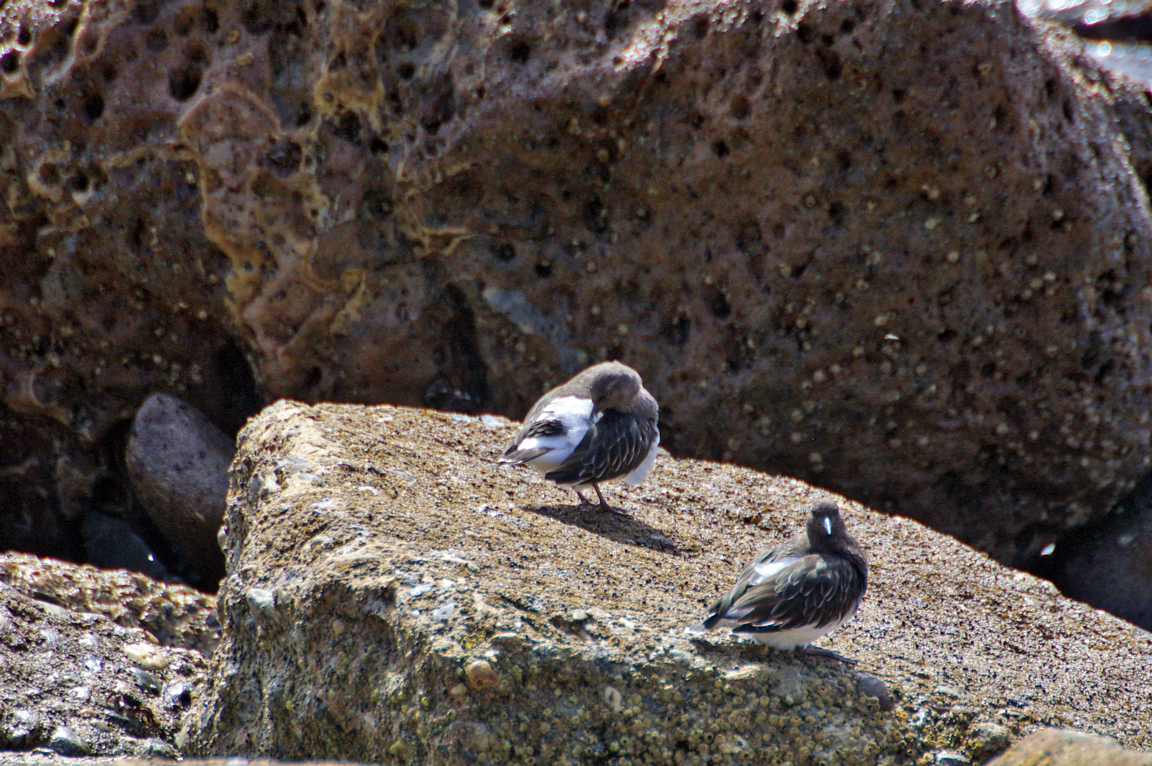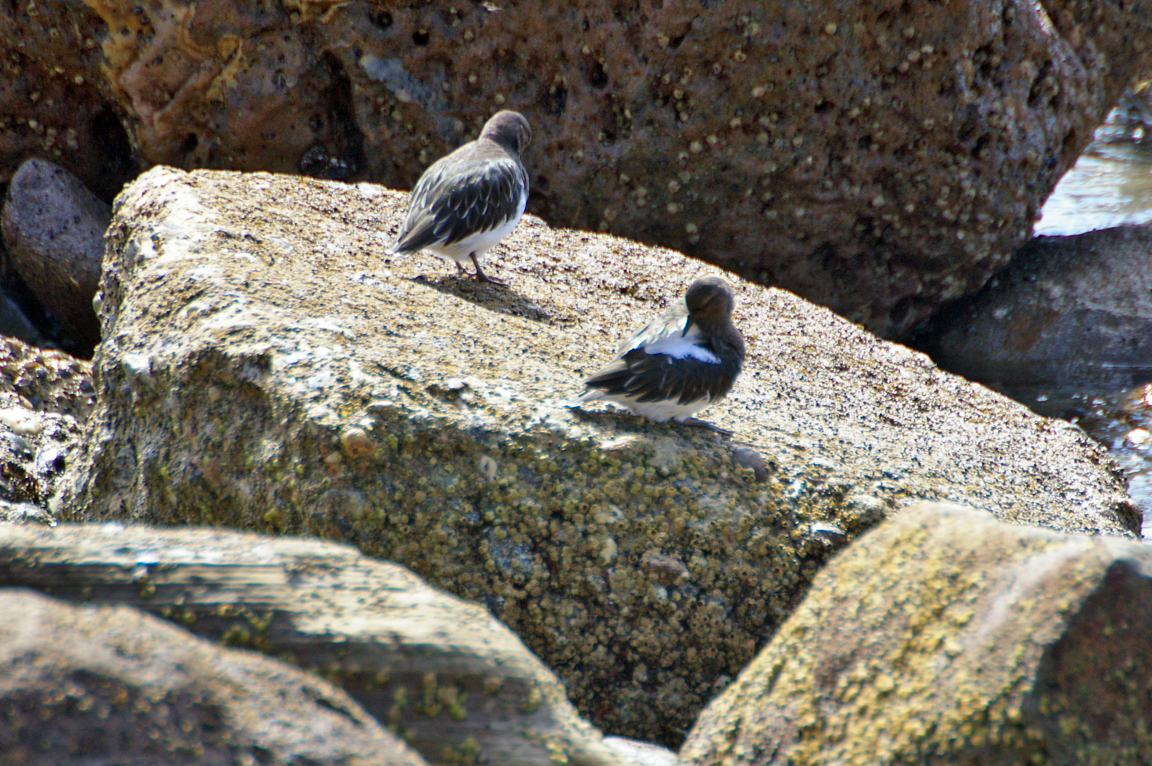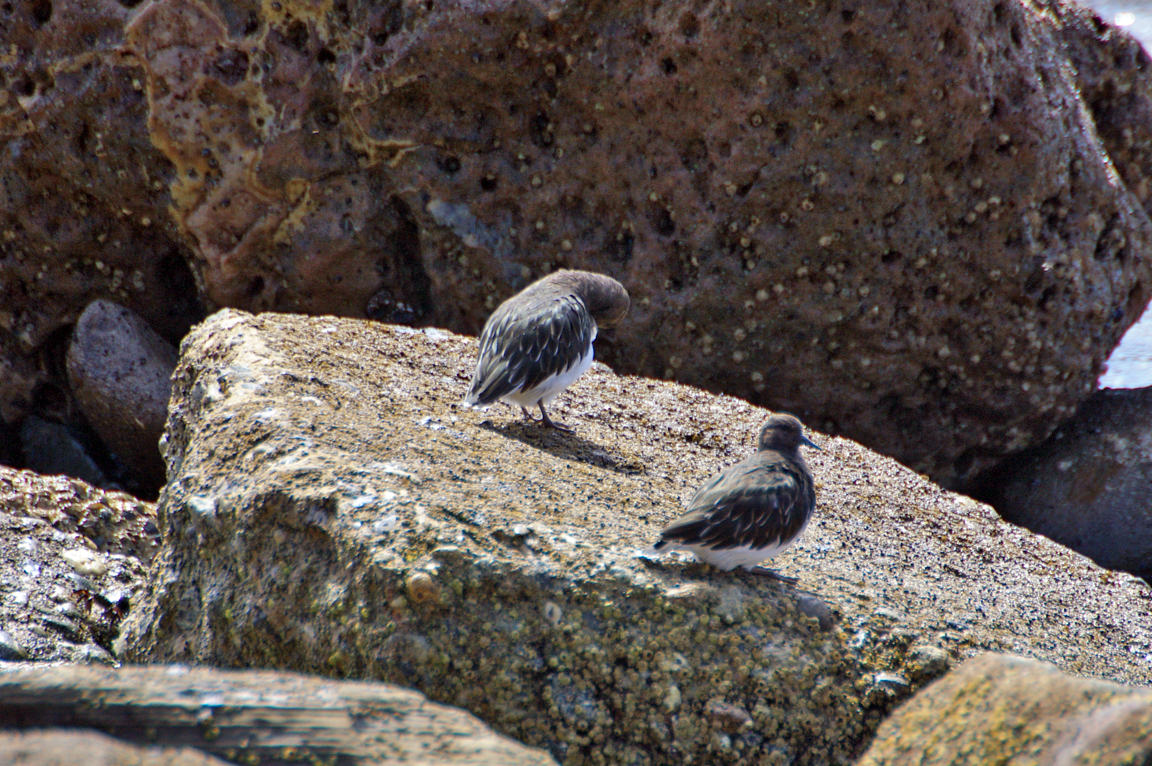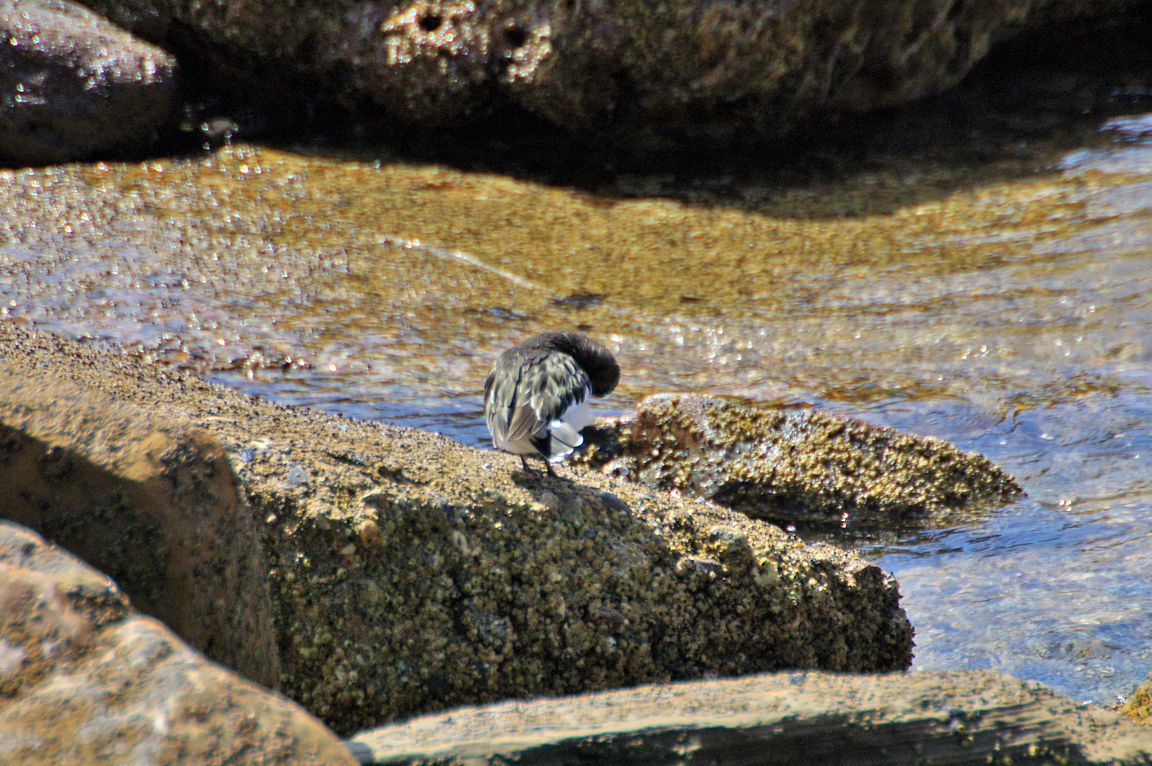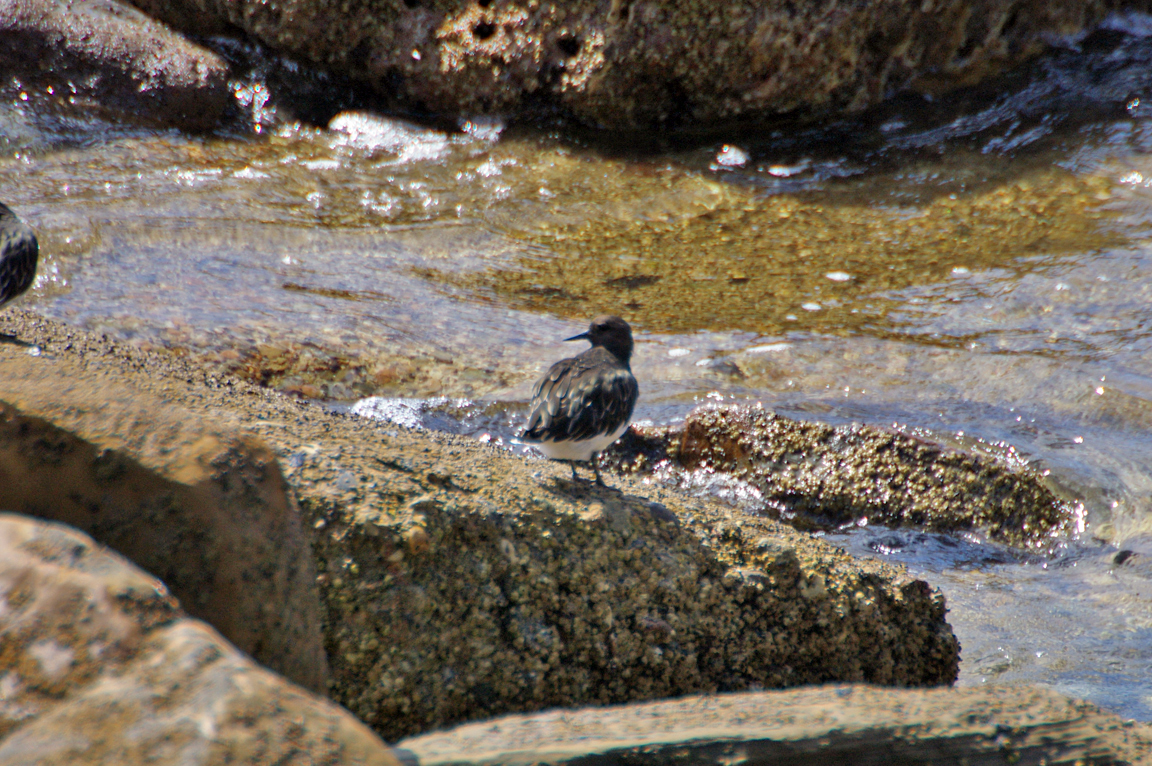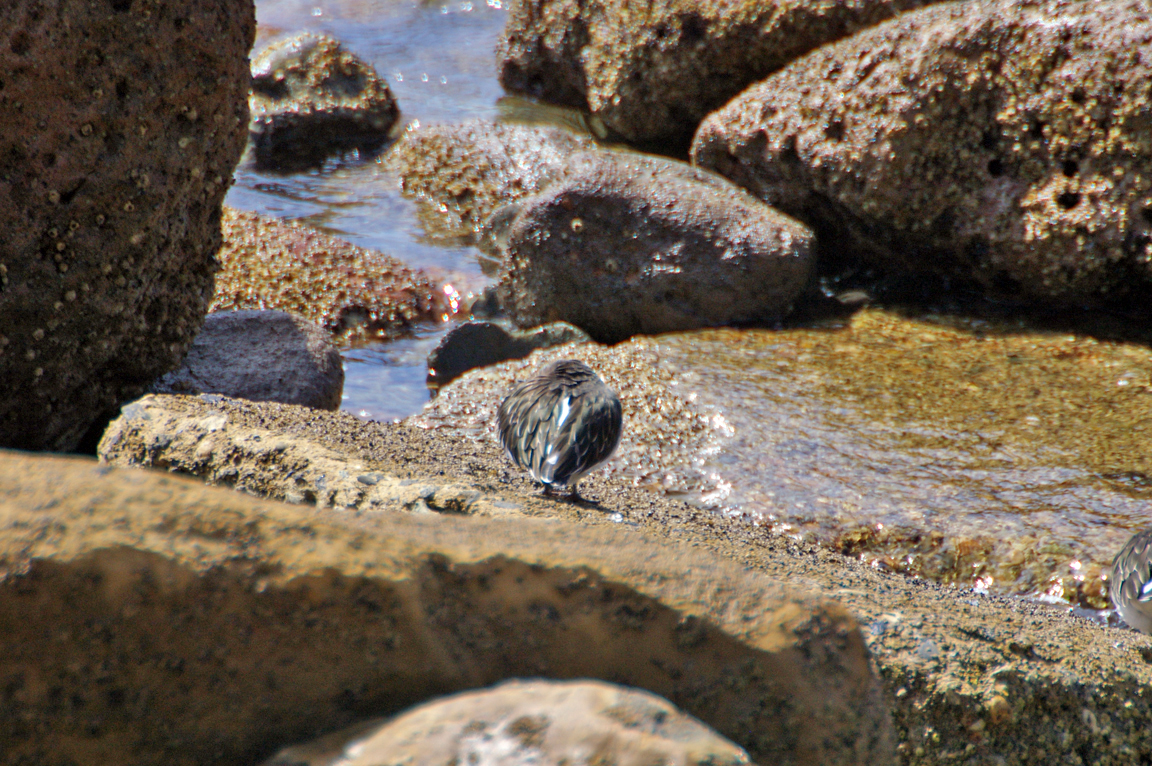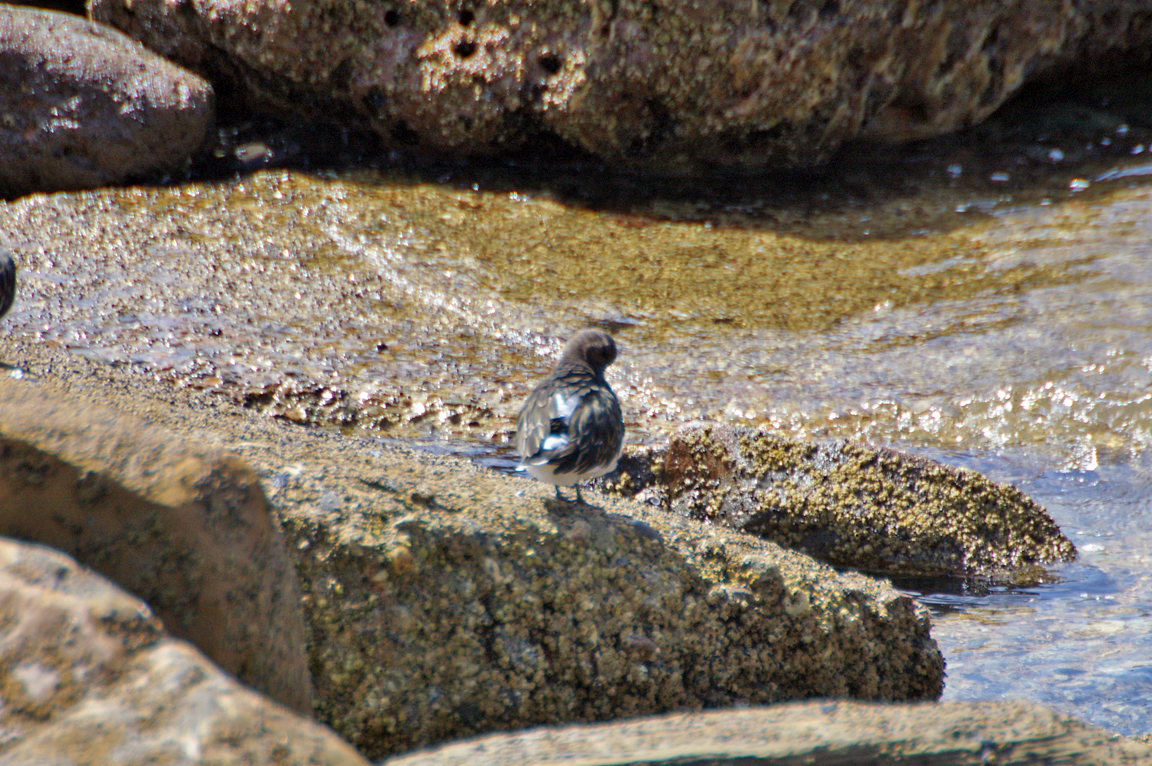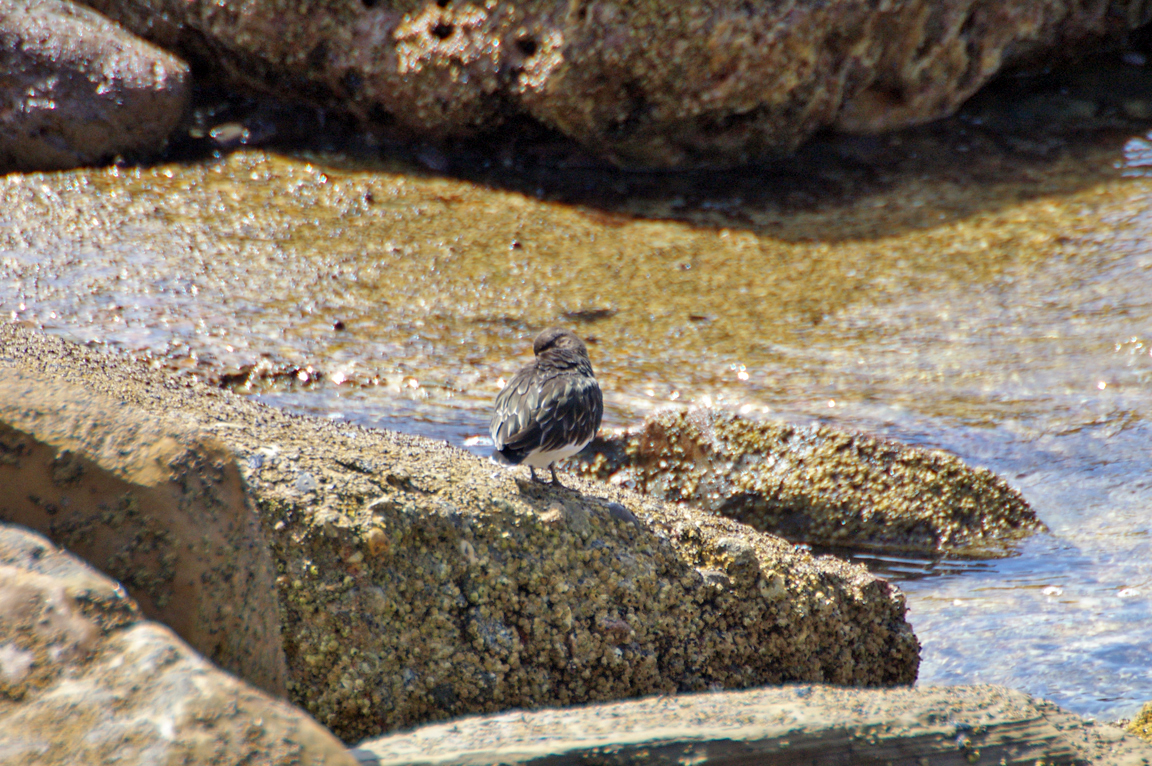|
|
|
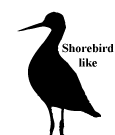 |
Black Turnstone
|
| Arenaria melanocephala | |
The Black Turnstone is one of the defining species for the rocky, wave-battered Pacific Coast. It blends in well with the dark rocks, but a careful winter observer will find it from Alaska through Baja California. It is rarely found far from the vicinity of spraying waves.
Interesting Information
-
As their name suggests, turnstones often forage by turning over stones and other objects.
-
On the breeding grounds, the Black Turnstone is extremely aggressive to avian predators, flying more than 100 m from its territory to pursue jaegers and gulls.
-
A group of sandpipers has many collective nouns, including a "bind", "contradiction", "fling", "hill", and "time-step" of sandpipers.
Description
Adult Description
-
Length Range: 23 cm (9 in)
-
Weight: 113 g (4 oz)
-
Size: Medium (9 - 16 in)Stocky, short-legged shorebird.
-
Short, dark bill fairly thick with a slight upturn to the lower mandible.
-
Legs usually dark, but occasionally dark red or pinkish.
-
Bold wing pattern visible in flight, produced by white feathers at the base of the leading edge of the wing, a white wing stripe, and a white lower back.
-
White tail with black terminal band.
Sex Differences
Sexes Similar
Immature
Resembles winter adult, but slightly more brownish overall with buffy fringes on feathers of body and tail tipped with brown rather
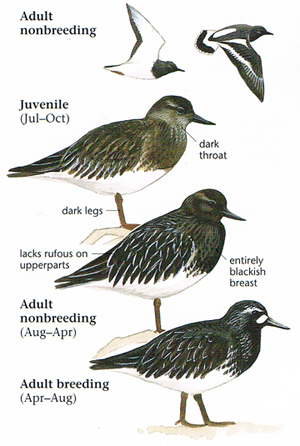
Photo taken from: The Sibley Field Guide by David Allen Sibley
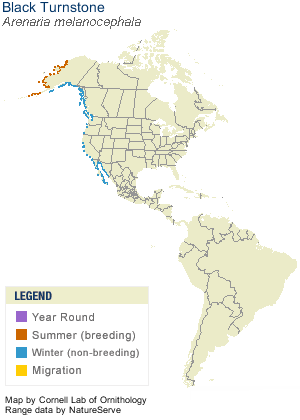
© 2003 Cornell Lab of Ornithology
|
Habitat |
|
|
Behavior |
|
Uses aerial displays to attract a mate. Uses oddly-shaped bill to flip and turn stones, algae, sticks, and other items to find food underneath. Probes in cracks. Pecks at food on surface of rocks. |
|
Food |
|
Aquatic invertebrates: crustaceans, barnacles, and limpets. |
Taxonomy
| Kingdom: | Animalia |
| Phylum: | Chordata |
| Subphylum: | Vertebrata |
| Class: | Aves |
| Order: | Charadriiformes |
| Family: | Scolopacidae |
| Genus: | Arenaria |
| Species: | Arenaria melanocephala |
Similar Species |
|
None |
|
Bird Sound |
|
Constant rattles and dry chatters in winter feeding flock. On breeding ground, calls a persistent "weet, weet, too-weet" at intruders. |
|
Eggs look like this |
|
Photo taken from: ARCTOS Collaborative Collection Management Solution |
